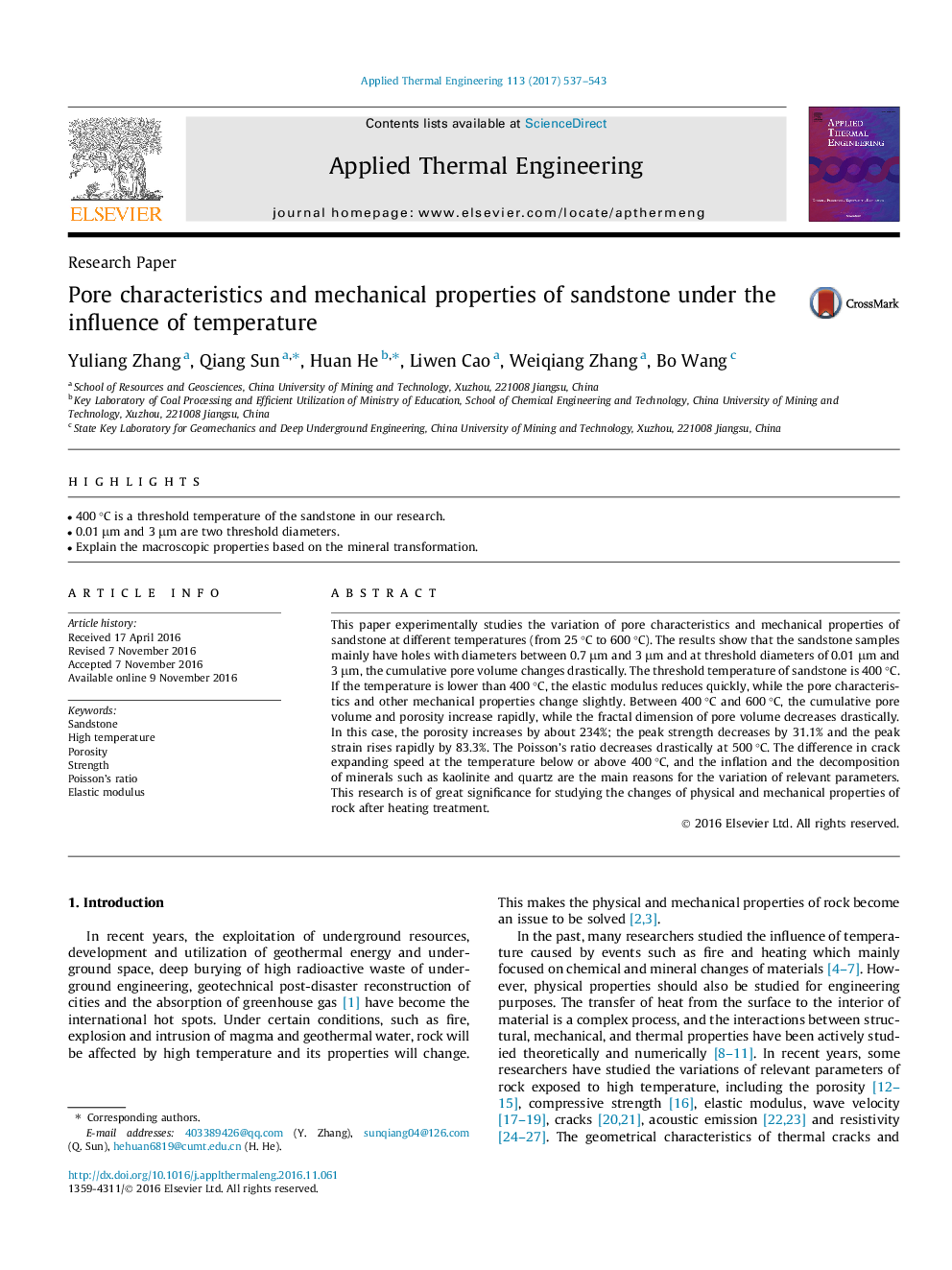| Article ID | Journal | Published Year | Pages | File Type |
|---|---|---|---|---|
| 4991828 | Applied Thermal Engineering | 2017 | 7 Pages |
Abstract
This paper experimentally studies the variation of pore characteristics and mechanical properties of sandstone at different temperatures (from 25 °C to 600 °C). The results show that the sandstone samples mainly have holes with diameters between 0.7 μm and 3 μm and at threshold diameters of 0.01 μm and 3 μm, the cumulative pore volume changes drastically. The threshold temperature of sandstone is 400 °C. If the temperature is lower than 400 °C, the elastic modulus reduces quickly, while the pore characteristics and other mechanical properties change slightly. Between 400 °C and 600 °C, the cumulative pore volume and porosity increase rapidly, while the fractal dimension of pore volume decreases drastically. In this case, the porosity increases by about 234%; the peak strength decreases by 31.1% and the peak strain rises rapidly by 83.3%. The Poisson's ratio decreases drastically at 500 °C. The difference in crack expanding speed at the temperature below or above 400 °C, and the inflation and the decomposition of minerals such as kaolinite and quartz are the main reasons for the variation of relevant parameters. This research is of great significance for studying the changes of physical and mechanical properties of rock after heating treatment.
Related Topics
Physical Sciences and Engineering
Chemical Engineering
Fluid Flow and Transfer Processes
Authors
Yuliang Zhang, Qiang Sun, Huan He, Liwen Cao, Weiqiang Zhang, Bo Wang,
